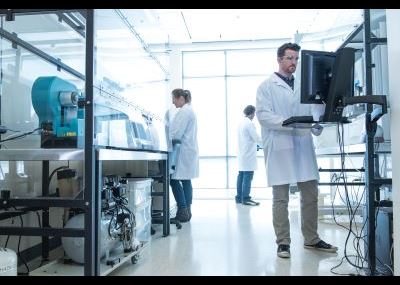If you’re working with RNA or DNA oligos, a common question is: could there be variation between different syntheses or between the batches I receive? Could differences affect the results of my experiments?
Ensure reliability with Dharmacon™ synthetic RNA and DNA oligo reagents
In this blog post we explore the measures taken to ensure reproducibility in our RNA and DNA syntheses, and outline some troubleshooting steps for investigating unexpected results in your experiments.
What makes Dharmacon™ RNA and DNA synthesis so reproducible?
Our RNA and DNA is synthesized on an automated platform which leaves very little room for human error.
Oligos are made using a completely synthetic process based on patented 2’-ACE chemistry.
Every oligo synthesized goes through our quality control process, which includes using mass spectrometry to confirm that the oligo produced matches what you ordered. Our manufacturing facility is ISO 9001-certified. Please find our certifications here.
Together, these aspects of our synthesis result in different batches of the same oligo being effectively identical – there is no significant batch-to-batch variation.

How can I check if two batches of an oligo are the same?
When using an off-the-shelf product, compare the catalog numbers: if the catalog numbers are the same, then so are the oligo sequences and modifications. If the sequence of a pre-designed product changes, then the catalog number changes too. For example, if we find that an siRNA no longer aligns with all isoforms of its target gene after an update to the RefSeq database, we would re-design the siRNA and issue it a new catalogue number.
Whether you’re using off-the-shelf or custom oligos, the sequences and modifications will be given on the Product Datasheet sent with your order. Some modifications such as ON-TARGETplus™ or miRIDIAN™ are proprietary, so you will find the modification name rather than the exact chemical modifications. If you would like an electronic version of the Product Datasheet, please contact us with your order number.
What else could explain my results varying between experiments?
Here are some tips which may be worth considering in the context of your experiment:
Resuspension and storage
- Oligos are provided as dried-down pellets, ready to resuspend to a concentration that meets your needs. Dried down oligos are stable at room temperature for up to 4 weeks, and at -20oC or -70 to -80oC for at least a year.
- Resuspend oligos in a DNase or RNase free solution which is suitable for your experiments, at a reasonable concentration to avoid degradation. The resuspended oligo can be aliquoted into smaller volumes appropriate for your experiments to avoid repeated freeze-thaws, which could damage the oligo. Our recommendation is to avoid more than 5 freeze-thaws. Store resuspended oligos at -20oC or -70 to -80oC in a non-frost-free freezer.
Oligo concentration
- Confirm the concentration of the oligo stock solution by measuring absorption at 260nm.
- Ensure you are working with the recommended oligo concentration, or the concentration that was optimized for your assay in previous experiments.
Delivery
- Systematically determine the optimal delivery conditions, following the manufacturer’s optimization instructions.
- Once the conditions are optimized, use a positive control in each experiment to confirm that the oligo is being delivered to the cells each time.
- Delivery conditions could change over time, even when using the same reagents. For example, with lipid delivery, you may either have a new tube of transfection reagent, or a tube of transfection reagent that has aged since the previous use. Re-optimization may be required.
Cells
- The passage number, culture media, cell density, culture format, passaging cells harshly, allowing cells to overgrow, or contamination could all impact your experiment.
- If using primary cells, there may be differences between cells from different donors, or between patients and healthy control cells.
- When repeating experiments in a different cell type, we recommend re-optimizing delivery conditions. Some effects may be cell-type specific
- Cell viability may be affected by oligo delivery, or the knockdown or knockout of a gene.
Assay
- Use an assay which is appropriate for the reagents and your goals, with assay-specific positive and negative controls.
- Ensure that the timing of the assay after oligo delivery is sufficient for the expected effect to be detectable. This will vary depending on the cell type being used and the gene(s) being studied.
- If you are working with a mixed population of cells, bear in mind that the effect may be masked by the presence of unaltered cells.
We are always happy to discuss your experiments with you. Feel free to contact us.

